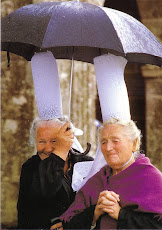The regional capital of Brittany, has, over the past decades, restored its archtectural heritage, thus highlighting its dignified elegance. This city of artistic and historical interest, where good food is highly valued, exudes atmosphere from its narrow, winding medieval streets, lined with charming half-timbered houses with carved sills, which happily escaped the ravages of a huge fire in1720. The stately public buildings and numerous private mansions adorning the two royal squares (place du Palais and place de I'H6tel-de-Ville) at the very heart of the town, delimited to the south by the lively quays along the Vilaine. Rennes is also a university city which has become a centre of and communications industry.
Old Town
This is the part of the old town which escaped the fire. It contains a maze of 15C and 16C houses with overhanging storeys and lordly mansions with sculpted facades.
Basilique St-Sauveur
17 and 18C. Inside this basilica are a fine gilded wooden canopy and an organ loft (17C). To the right is a chapel consecrated to Our Lady of Miracles who saved Rennes from the English during the siege of 1357. Note the numerous ex-votos which have been donated in gratitude to Our Lady.
Old Houses
Rue St-Sauveur - No 6 stands a 16C canon's residence.
Rue St-Guillaume - No 3, a beautiful medieval house, known as Maison De Guesdin, contains the restaurant Ti Koz.
Rue de la Psalette -This street is lined with old houses.
Rue du Chapitre No 22 is a Renaissance house; no 8 is the Hotel de Brie (17C); no 6 the 18C Hotel de Blossac with a fine granite staircase (on the left as you enter) with marble columns and a wrought-iron handrail.
Cathedrale St-Pierre
The third built on the site since the 6C, the cathedral was finished in 1844 after 57 years' work. The previous building collapsed in 1762 except for the two towers in the Classical style flanking the façade.
The interior is very rich, its stucco facing covered with paintings and gilding. The cathedral contains a masterpiece: the gilded and carved wood altarpiec¬e in the chapel before the south transept. Both in size and in execution this 6C Flemish work is one of the most important of its kind. The scenes represent the life of the Virgin.
Portes Mordelaises
The city's main entrance, these gates are all that remain of the 15C ramparts The kings of Brittany passed through it on their way to the cathedral for their coronations. In 1598 the silver-gilt keys of the city were presented there to Henri IV. At this kind of ceremony the Bearnais made a statement which always went down well. “These are beautiful keys," he would say, "but I would rather have the keys to the hearts of your citizens."
The drawbridge, modeled on that of Montmuran Castle, was reconstructed in 1997.
Place des Lices
Jousts and tournaments were once held on this square. At no 34 stands a 17C mansion, the Hotel de Molant, with a mansard roof; inside, there is a sumptuous oak staircase with trompe-I'ceil paintings (a skyscape) and woodwork decorating the ceiling of its stairwell.
Rue St-Michel
This street is lined with half-timbered houses and still has the inns and taverns dating from the time when it was part of the city's suburbs.
Place Ste-Anne
The coloured half-timbered houses, Gothic and Renaissance in style, surround a neo-Gothic church. The house formerly occupied by Mayor Leperdit is at no 19. The square is next to rue d'Echange, which contains the Jacobin Convent whereAnne of Brittany was betrothed to the king of France.
Rue du Pont-aux-Foulons
This is a shopping street with 18C half-timbered houses.
Rue du Champ-Jacquet
This street leads to an oddly shaped triangular square of the same name. It is lined to the north with tall half-timbered 17C houses and is overlooked by the stone and wood facade of Hotel de Tize (no 5).
The itinerary continues along rue La Fayette and rue Nationale into the classical part of the city with its majestic buildings, in particular the Palais du Parlement de Bretagne.
Rue St-Georges
This animated street, lined with cafes and restaurants, has many old houses: Nos 8 10 and 12 form a remarkable group of 17C half-timbered houses. No 3, the 16C 16C Hotel de Moussaye, has a lovely Renaissance facade with sculptured pilasters.
Palais St-Georges
Preceded by a beautiful garden, this former Benedictine abbey (1670) now houses administrative services.
Eglise St-Germain
This Flamboyant church (15C-16C) with its 17C gable (on the south side) retains certain characteristics typical of a Breton cathedral: wood vaulting and its beams with sculpted ends. In the south transept the beautiful 16C stained-glass window recounts the life of the Virgin and the Passion. The nave contains modern stained glass windows by Max Ingrand.
Place de I'Hotel de Ville
This regal square is the centre of the Classical district. On its west side stands the town hall (Hotel de Ville) and on the east side, the theatre. To the south, beyond rue d'Orleans, the view is blocked by the Palais du Commerce (Trade Hall), an imposing buildinq decorated with monumental sculpture.
Friday, August 20, 2010
Subscribe to:
Post Comments (Atom)




No comments:
Post a Comment